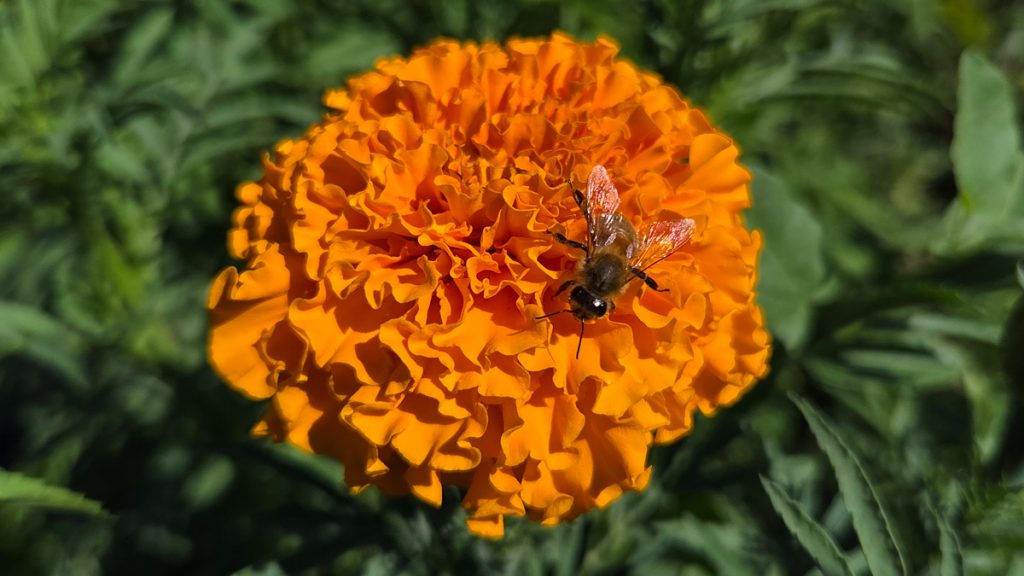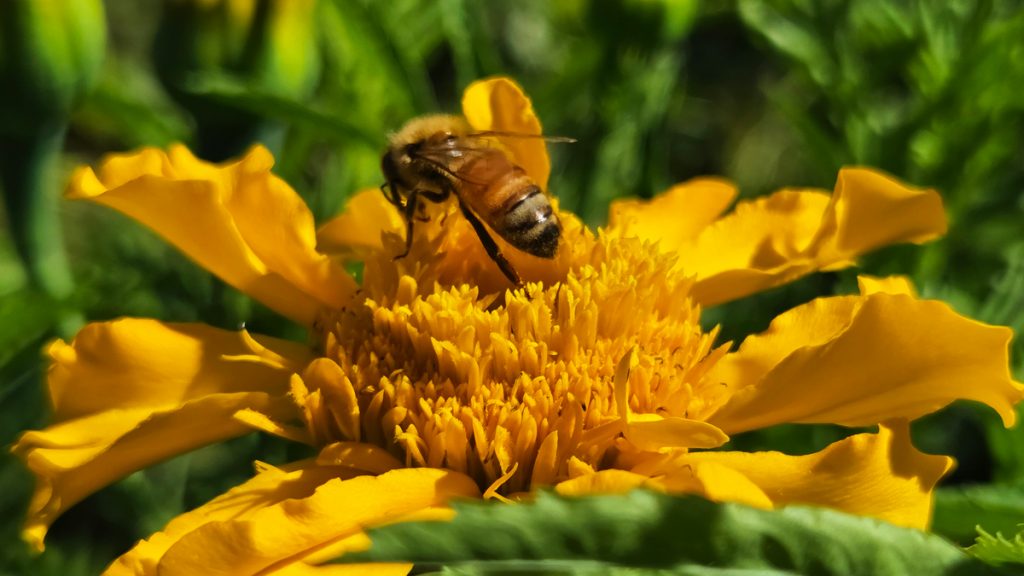
Marigold (Tagetes erecta)
Common names
African Marigold, Aztec Marigold, Mexican Marigold, American Marigold, Big Marigold, Cempasúchil, Cempaxóchitl
Plant Family
Asteraceae (Daisy Family)
North American Native
No
Description/Taxonomy
Tagetes erecta is an annual flowering plant that reaches heights of 20 to 90 cm (7.9 to 35.4 inches). Despite being native to the Americas, it is often called the African marigold. The plant produces large, vibrant orange to yellow blooms with a characteristic musky scent. The species name "erecta" refers to its upright growth habit.
History
The Aztecs gathered the wild plant as well as cultivating it for medicinal, ceremonial and decorative purposes. For the Aztecs, cempasúchil was sacred, used in religious ceremonies, medicinal practices, and as an offering to honor the dead. Its vivid color and strong scent were believed to guide spirits back to the living world. After the Spanish conquest of the Aztec Empire, it was introduced to Europe and became widely cultivated commercially with many cultivars in use as ornamental plants.
Parts Used
Flowers (petals and whole blooms), leaves
Hickok Farms Products
Coming Soon
Affiliate Disclosure: As an Amazon associate, we may earn commissions from qualifying purchases made through our links to Amazon.com products.
Products
Amazon
Buy SeedEbay
Cultivation
Easily grown in average, evenly moist, well-drained soils in full sun. African marigold does well in full sun, which encourages blooms, but appreciates light afternoon shade in hot summer climates. Start seed indoors 6-8 weeks before last frost date or sow seeds outdoors after all danger of frost has passed. Deadhead regularly to prolong flowering.
Growing Zones
Annual (grown in all zones as annual)
Light Requirements
Full Sun (appreciates light afternoon shade in hot climates)
Soil Moisture
Medium (evenly moist, well-drained)
Mature Height
8" - 36" tall (depending on variety)
Mature Spread
12" - 18" wide
Bloom Time
Summer to Frost (July onwards)
Advantages
Deer resistant, attracts pollinators, excellent cut flowers, long-lasting blooms, vibrant colors, companion planting benefits, drought tolerant once established, suitable for containers and borders
Constituents
Contains lutein (valuable for eye health), flavonoids, essential oils, carotenoids, and various bioactive compounds that contribute to its medicinal and ornamental properties.
Herbal and Medicinal Uses
Historically used by the Aztecs for treating cold-related ailments, promoting menstruation and urination, and for ceremonial purposes. Mexican marigolds have been used in local medicines for hundreds of years, including remedies for fevers, colds and digestive problems. Modern research focuses on lutein content for eye health applications. The plant has also been used traditionally as a dye plant and continues to play a central role in Día de los Muertos celebrations.



